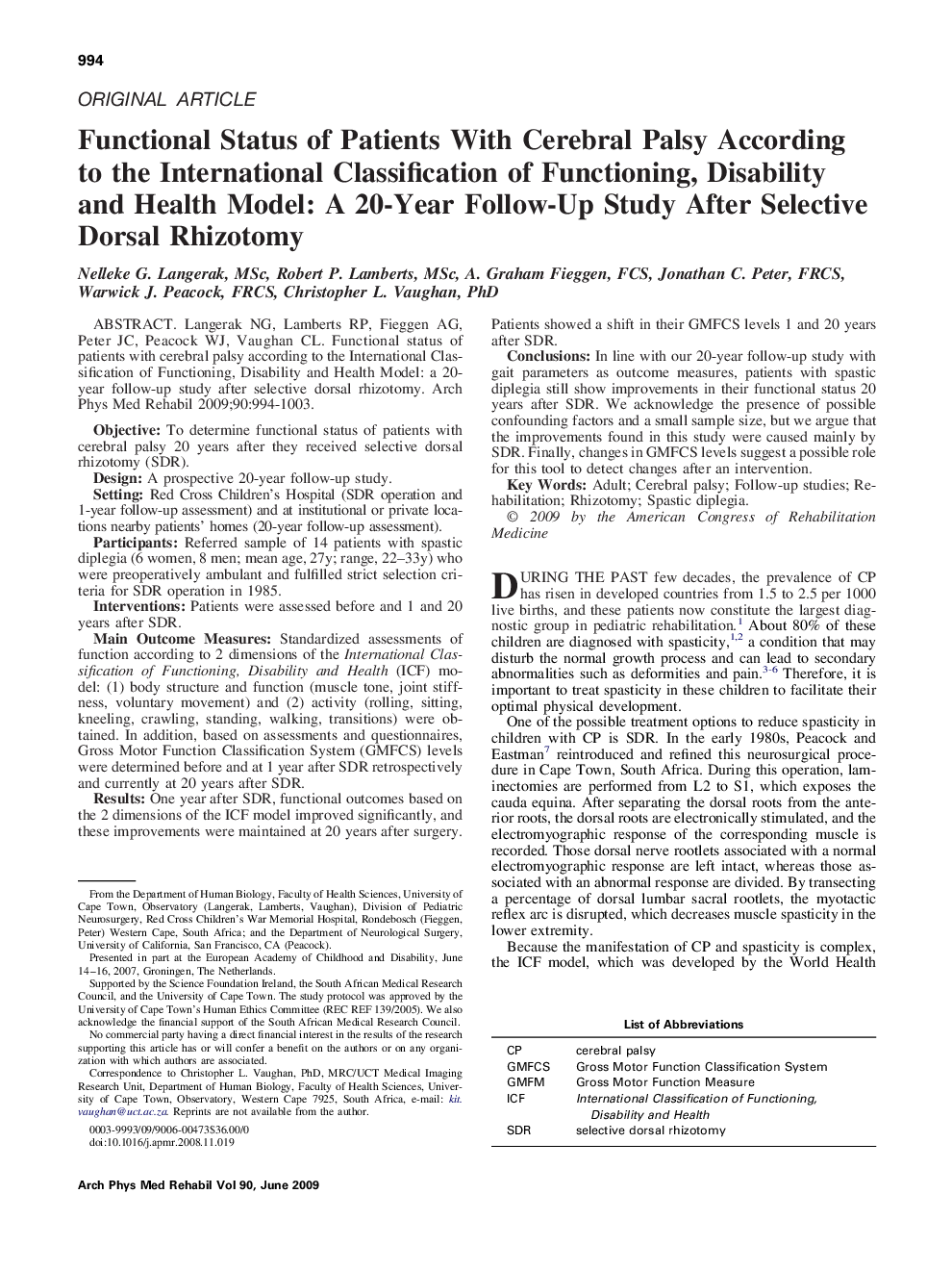| کد مقاله | کد نشریه | سال انتشار | مقاله انگلیسی | نسخه تمام متن |
|---|---|---|---|---|
| 3451509 | 1595765 | 2009 | 10 صفحه PDF | دانلود رایگان |

Langerak NG, Lamberts RP, Fieggen AG, Peter JC, Peacock WJ, Vaughan CL. Functional status of patients with cerebral palsy according to the International Classification of Functioning, Disability and Health Model: a 20-year follow-up study after selective dorsal rhizotomy.ObjectiveTo determine functional status of patients with cerebral palsy 20 years after they received selective dorsal rhizotomy (SDR).DesignA prospective 20-year follow-up study.SettingRed Cross Children's Hospital (SDR operation and 1-year follow-up assessment) and at institutional or private locations nearby patients' homes (20-year follow-up assessment).ParticipantsReferred sample of 14 patients with spastic diplegia (6 women, 8 men; mean age, 27y; range, 22–33y) who were preoperatively ambulant and fulfilled strict selection criteria for SDR operation in 1985.InterventionsPatients were assessed before and 1 and 20 years after SDR.Main Outcome MeasuresStandardized assessments of function according to 2 dimensions of the International Classification of Functioning, Disability and Health (ICF) model: (1) body structure and function (muscle tone, joint stiffness, voluntary movement) and (2) activity (rolling, sitting, kneeling, crawling, standing, walking, transitions) were obtained. In addition, based on assessments and questionnaires, Gross Motor Function Classification System (GMFCS) levels were determined before and at 1 year after SDR retrospectively and currently at 20 years after SDR.ResultsOne year after SDR, functional outcomes based on the 2 dimensions of the ICF model improved significantly, and these improvements were maintained at 20 years after surgery. Patients showed a shift in their GMFCS levels 1 and 20 years after SDR.ConclusionsIn line with our 20-year follow-up study with gait parameters as outcome measures, patients with spastic diplegia still show improvements in their functional status 20 years after SDR. We acknowledge the presence of possible confounding factors and a small sample size, but we argue that the improvements found in this study were caused mainly by SDR. Finally, changes in GMFCS levels suggest a possible role for this tool to detect changes after an intervention.
Journal: Archives of Physical Medicine and Rehabilitation - Volume 90, Issue 6, June 2009, Pages 994–1003